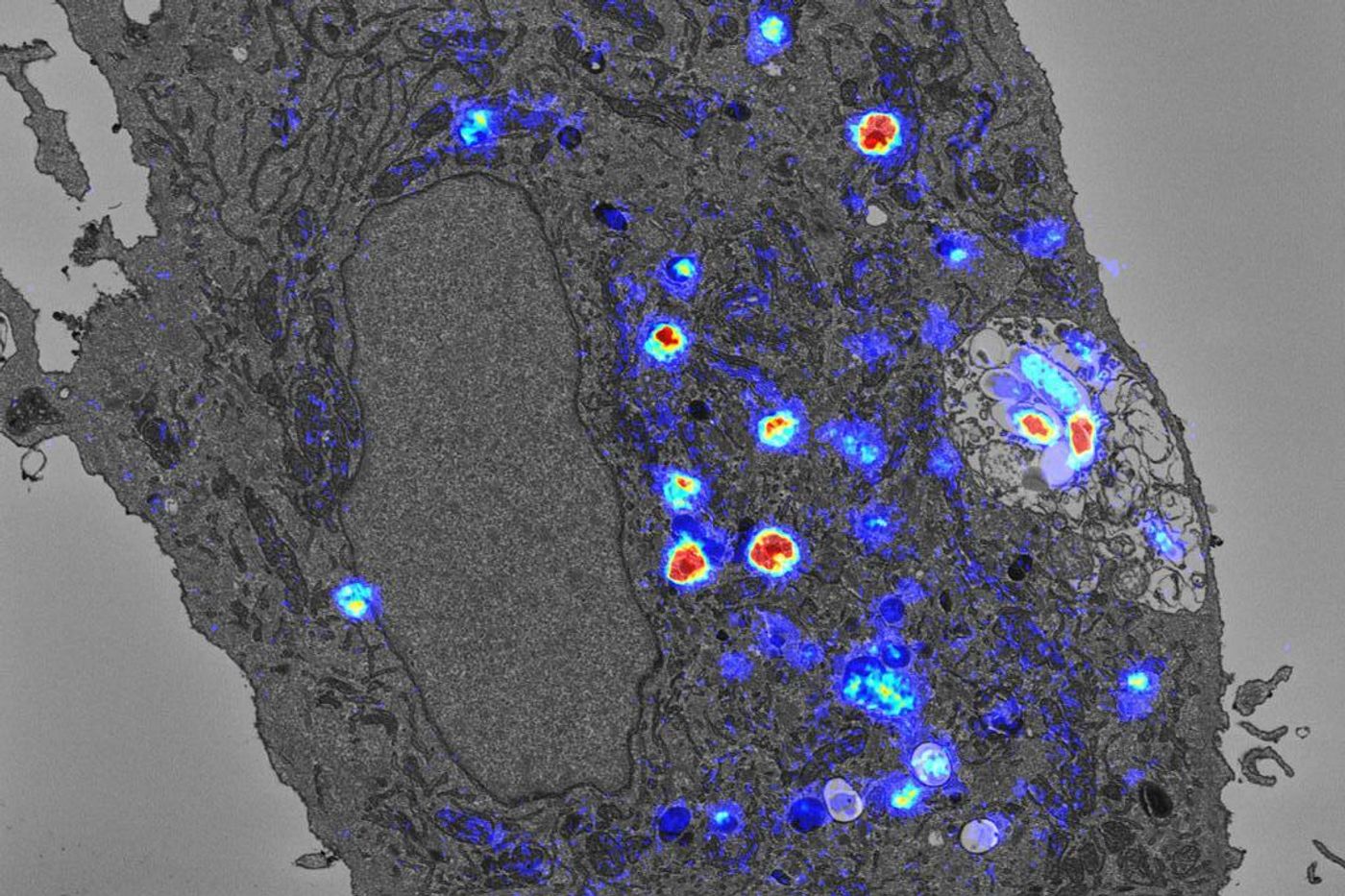The Mechanism of a TB Therapeutic is Revealed & May Improve Drug Design
Sometimes a drug is effective even though scientists don't know exactly what it does on a molecular level. The tuberculosis (TB) drug bedaquiline was one of those drugs; now researchers have deciphered its mechanism, after developing a way to visualize how antibiotics work against pathogens that are infecting humans. The findings, which have been reported in Science, add to our understanding of what antibiotics do, and can aid in the development of new drugs.
The bacterium Mycobacterium tuberculosis (Mtb) causes TB, which is thought to have caused 1.7 million deaths globally in 2017. The researchers found that bedaquiline builds up in drops of lipids in Mtb-infected human cells. This buildup acts as a reservoir that can act against Mtb over extended periods of time.
"Bedaquiline is the first newly approved antibiotic for TB treatment in 50 years, but until now, we didn't understand how a compound that doesn't dissolve in water could be so effective in treating TB," noted the first author of the report Daniel Greenwood, a Crick Institute graduate student.
"Normally, compounds that only dissolve in lipids, known as lipophilic compounds, are often abandoned during drug development because they tend to bind to proteins and fats in our bodies in a non-specific way. We wondered how such a drug could ever reach the bacteria. Our surprising findings show that even very lipophilic antibiotics like bedaquiline are worth pursuing in drug development. In the case of TB, this conventionally undesirable trait actually boosts drug delivery," he added.
While immune cells called macrophages try to eliminate Mtb by identifying, engulfing and destroying the microbes, the bacteria can get around this defense. As the bacteria reproduce and cause illness, patients often need at least four antibiotics administered over six months or more to fight off the pathogen. Researchers did not know whether antibiotics could reach every place that Mtb used to hide and propagate.
In this work, three imaging techniques called electron, correlated light, and ion microscopy were combined, enabling the researchers to see how TB drugs were distributed in human macrophages that had engulfed Mtb. Bedaquiline could be seen accumulating in various parts of the cell, and especially in lipid droplets.
The pathogenic bacterium can consume the lipid droplets. The scientists observed that if they prevented the formation of lipid droplets, then Mtb carried less bedaquiline, suggesting that the lipids are probably moving the drug into the pathogen.
"Now that we can see exactly where antibiotics go once they enter macrophages, we can build up a much clearer picture of how they reach their targets, and harness these observations to design more effective treatments in the future, not only for TB but for other infectious diseases too," said the senior study author Max Gutierrez, Crick group leader.
Learn more about how the CDC is trying to prevent TB from the video above, while the video below discusses what makes TB so deadly.
Sources: AAAS/Eurekalert! via Crick Institute, Science









